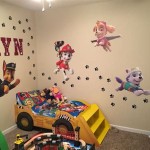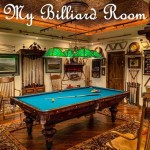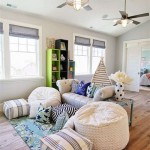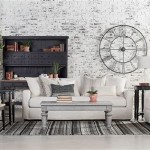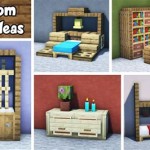How To Decorate Glass Shelves In Living Room
Glass shelves offer a sleek and modern way to display treasured possessions and add personality to a living room. Their transparent nature creates an airy feel, preventing the space from looking cluttered. However, decorating them effectively requires careful consideration to achieve a balanced and visually appealing display.
One of the first steps in decorating glass shelves is to consider the overall style of the living room. A minimalist aesthetic might call for a few carefully chosen objects with clean lines, while a more eclectic space might benefit from a curated collection of diverse items. Understanding the existing décor helps inform the selection and arrangement of items on the glass shelves.
Choosing the right items to display is crucial. Books, framed photos, decorative bowls, sculptures, and small plants are popular choices. Varying the height and size of these items creates visual interest. For example, stacking books horizontally can create a base for a smaller, taller object placed on top. This interplay of heights prevents a monotonous look.
Color plays a significant role in the overall aesthetic. A monochromatic scheme can create a sense of calm and sophistication. Alternatively, using a range of complementary or contrasting colors can inject energy and vibrancy into the room. Repeating a specific color throughout the display helps tie the arrangement together and creates a cohesive look.
The principle of layering applies to decorating glass shelves as much as it does to other aspects of interior design. Placing smaller items in front of larger ones creates depth and dimension. This technique can be used with books, frames, or decorative objects. A slightly overlapping arrangement adds visual intrigue and prevents the display from appearing flat.
Lighting can significantly enhance the display on glass shelves. Strategically placed spotlights can highlight specific items and create a dramatic effect. Incorporating LED strip lights under the shelves can add a subtle glow and showcase the transparency of the glass. Consider the existing lighting in the room and how it interacts with the shelf display.
Negative space, the empty area around objects, is just as important as the objects themselves. Overcrowding shelves can make the display look cluttered and detract from the individual pieces. Leaving some areas empty allows the eye to rest and appreciate the curated arrangement. It also emphasizes the airiness that glass shelves provide.
Grouping similar items together can create a sense of order and cohesion. For example, displaying a collection of pottery in one area or grouping framed photos together tells a story and adds a personal touch to the space. This strategy works well for collections of any type, be it vintage toys, travel souvenirs, or natural specimens.
The rule of thirds, a compositional guideline commonly used in photography and art, can be applied to arranging items on glass shelves. Imagining the shelf divided into three sections, both horizontally and vertically, and placing key items at the intersections of these lines creates a visually pleasing balance. This technique avoids placing items directly in the center, adding dynamism to the display.
Incorporating natural elements, such as plants or pieces of driftwood, can bring a touch of the outdoors in and soften the look of the glass shelves. Small succulents or air plants require minimal care and are well-suited to shelf displays. Natural elements add texture and a sense of organic life to the arrangement.
Regularly reassessing the arrangement and making adjustments keeps the display fresh and interesting. Switching out seasonal decorations or incorporating new finds prevents the shelves from becoming stagnant. This also provides opportunities to experiment with different arrangements and find what works best for the space.
The weight distribution on glass shelves is an important safety consideration. Heavier items should be placed on the lower shelves to ensure stability. This prevents the shelves from tipping and reduces the risk of breakage. Distributing weight evenly across the shelf also helps maintain balance.
Cleaning glass shelves regularly helps maintain their pristine appearance. Fingerprints and dust can detract from the beauty of the display. Using a glass cleaner and a soft cloth prevents streaks and keeps the shelves sparkling. Regular cleaning also helps preserve the clarity of the glass over time.
Utilizing the vertical space on the shelves maximizes storage and display potential. Taller items, such as vases or decorative sculptures, can be placed towards the back. This draws the eye upward and adds height to the display. Combining tall items with shorter ones in the foreground creates depth and visual interest.
Adding a backdrop to the shelves can enhance the display and provide a contrasting background for the objects. A mirrored backing creates an illusion of depth and amplifies the light, making the objects stand out. Alternatively, a painted or textured background can add a pop of color or visual texture to the arrangement.

Emily Ruddo Of Armonia Decors Glass Shelves Decor Bookcase Bookshelves

Glass Shelves For Living Room Ideas On Foter Bedroom Lighting Design Recessed Wall

Contemporary Bathroom Photos Living Room Glass Cabinet Shelves Decor Wall Design

Beadboard Backing And Glass Shelves Simple Lovely Glassshelves Decor Shelf

How To Decorate Bookshelves Green With Decor

Glass Shelves Decor Shelf Living Room Wall

How To Style A Glass Display Cabinet

Floating Shelves Glass Contemporary Shelf Design Decor

Glass Shelves For Living Room Benefits And Ideas

Wallscapes Glacier Clear Glass Shelf With Silver Bracket Kit Varies By Size Gl6030c Wall Shelves Decor Floating

